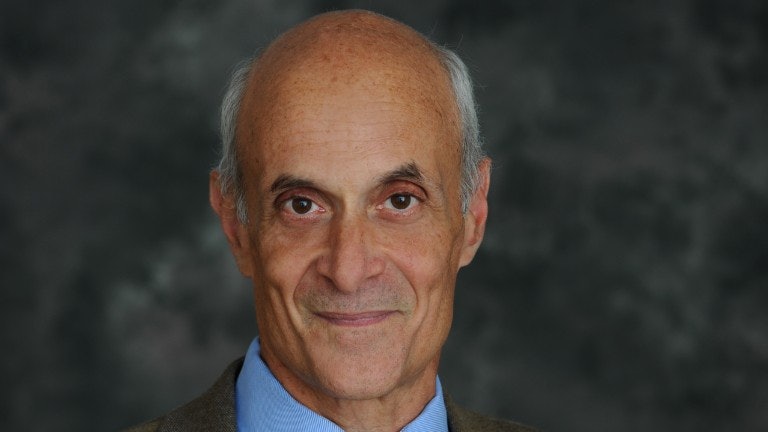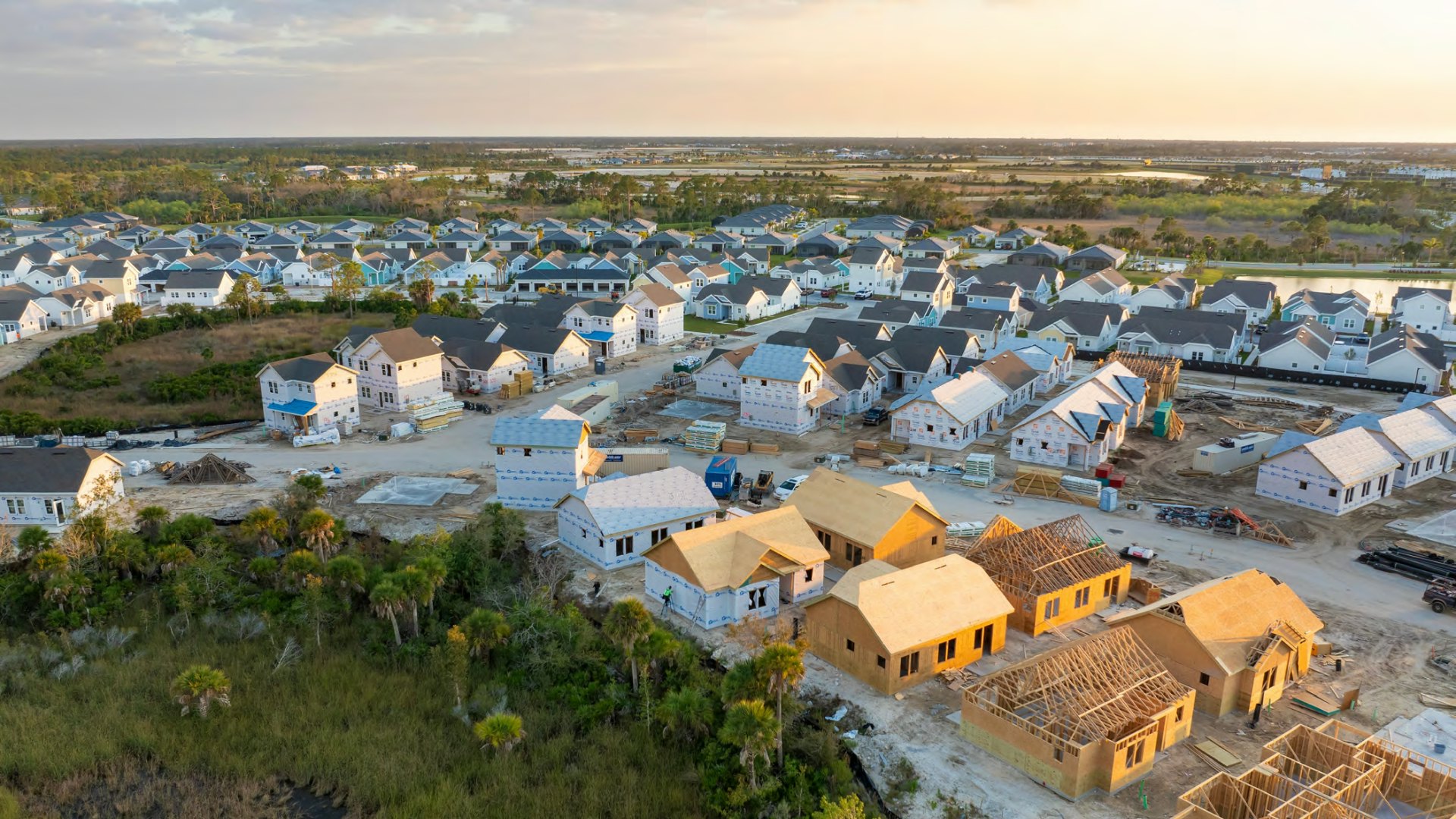In mid-May, Holly Kuzmich, George W. Bush Institute Executive Director, sat down with Michael Chertoff, former Secretary of Homeland Security and Co-founder and Executive Chairman of the Chertoff Group, to discuss the U.S.-Mexico border.
As part of a series on immigration insights, Michael Chertoff, former Secretary of Homeland Security and Co-founder and Executive Chairman of the Chertoff Group, discusses the U.S.-Mexico border and what it will take to address immigration reform that also tackles border security. In the interview, Secretary Chertoff states that, “We have to use all the tools in the toolbox” to address the continuing cycle of challenges at the border.
Transcript
Holly Kuzmich: Welcome to Immigration Insights, a series from the George W. Bush Institute, where we talk to experts in different fields about timely topics in immigration and border security. I’m Holly Kuzmich, executive director of the George W. Bush Institute. Today, I am joined by Secretary Michael Chertoff. Secretary Chertoff has a long career in public service, including as a federal prosecutor and a court of appeals judge. In 2005, he was nominated by President Bush to be head of the Department of Homeland Security, where of course he worked on a variety of initiatives to strengthen the US border. He’s currently executive chairman of the Chertoff Group, and recently worked with us at the Bush Center to chair a border policy working group that we had going at the Bush Institute. So we are excited to have you here today, Secretary Chertoff. Thanks for being with us.
Michael Chertoff: Great to be on.
Holly Kuzmich: Let me talk to you, of course, the past several months, there’s been a lot of news about the humanitarian crisis at the border. This is not the first time we’ve seen this and it’s not going to be the last time we’ve seen this. What do you think it’s important for people to understand about these surges we see at the border?
Michael Chertoff: Well, I think the most important thing is to recognize that what is as important as what we do at the border is the push factor that is sending people to leave their homes and take a dangerous journey up into the United States. When I was secretary, it was largely economic, people were looking for better jobs. Now, though, in addition to that, there is increased violence in the Northern Triangle. There’ve been natural disasters. There’s fear about the pandemic. When people are afraid for their lives, they will do almost anything to escape. So addressing the push factors is critical in order to have a long-term strategic plan for moderating the flow of migration.
Holly Kuzmich: So what, from your perspective, needs to change for us to really start to address this going forward, as opposed to this sort of cyclical thing that keeps happening? How can we take some steps to start to address this over the longterm?
Michael Chertoff: So we need to recognize there’s no one tool that we have to use. We have to use all the tools in the toolbox, and that means both creating a pathway for legitimate migration, that gives us visibility and control over who comes in, as well as toughening up the ability to prevent people from sneaking in illegally. Adjudicating asylum claims promptly and working with countries in Central and South America to remove some of the things that are frightening people into coming north without permission.
Holly Kuzmich: You mentioned just a bit ago sort of what you were seeing when you were secretary versus some of these asylum cases that we’re now seeing, what do you think we need to do from a policy perspective to really sort of address this, separate out and really be able to address asylum seekers who are coming out of fear versus economic migrants who are coming for a job and potentially not to stay permanently?
Michael Chertoff: Well, one of the interesting things we learned when we looked at this problem back in President Bush’s time is we look back to what had happened back in the mid-’80s when they had essentially amnesty. Most of the migrants did not want to be US citizens. They wanted to be able to come and go. So first, we need to look at the fact that there are unanswered labor needs in this country and the ability to have people coming from other countries on a temporary work visa, go back home, come back again when the work is here, is not only good for the migrants, it gives them a living and the ability to collect some money, but it’s good for America because it fills jobs that we cannot fill otherwise.
One of the things that has emerged recently was demographically, the growth of our population is leveling off. Also, if I may say so, it’s aging, which means we’re getting any younger people to do a lot of the work that is necessary to keep the economy going. So part of this is an economic plan for legitimate migration, including high-skilled and working migration.
The second thing we need to do is we do need to process asylum claims promptly and to resolve them quickly, so that people with legitimate basis for asylum can be granted asylum. But those who are not candidates for asylum have to be sent back again. We do have to send them back. So it may be necessary to detain people while they’re being adjudicated so they don’t simply disappear, and then resolve locations quickly.
Third, to the extent we’re dealing with economic problems in the region or law and order problems, we need to work with the governments there to create more economic opportunity and a rule of law. Only if we do all these things do we have a hope of efficiently controlling the flow at the border.
Holly Kuzmich: So Secretary Chertoff, talk a little bit about how we manage the border in terms of technology versus physical barriers. What’s right?
Michael Chertoff: Well, when I was in the office under President Bush, we get about 600 miles of barriers and barriers make sense in areas where the town is very near the border and people can run across and disappear in time before you can intercept them. So in Yuma, for example, Arizona, we went down there, we could see literally thousands of people on the Mexican side of the border waiting to run across what was basically a very short distance to Yuma. When we built the significant barrier there, that stopped it altogether. That gave the border patrol breathing space.
Michael Chertoff: On the other hand, most of the southern border does not have proximity between the border and a major highway or a major town. Therefore technology is the most efficient way to police the border. Sensors, radar, helicopters would allow the border patrol to move quickly to intercept, and that is much more cost-efficient. Whereas building a fence or a wall there would be a total waste of effort.
Holly Kuzmich: Immigration, you had to be part of conversations back in 2006 and ’07 on immigration reform. It’s just as not, if not more so, a political hot topic right now. On this issue, how do you think we should think about this balance between preserving the integrity of the border, but also treating those who come here from terrible conditions with compassion, but also with speed?
Michael Chertoff: Well, I think the key is to be firm, but not cruel. I think there were some people in the prior administration who believed if you could be as cruel and heartless as possible, that works as deterrent. But as I pointed out, people are fleeing for their lives. They’re not going to be deterred by cruelty. All you’re going to do is be inhumane and nasty. So I think it’s possible to keep people in humane detention facilities, adjudicate their cases relatively quickly, and then if they’re going to be sent back, send them back. But again, it requires you to do it in a way that is respectful of their dignity, but also is firm in terms of reaching a speedy and accurate resolution.
Holly Kuzmich: President Biden in his first week in office made immigration reform a priority. Of course, then we’ve seen the surge at the border and that’s really sort of not necessarily change the conversation, watching what’s happening at the border, thinking about what lawmakers need to do in D.C., how do you think border policy and border security fits into this current immigration reform debate if we’re going to actually make progress?
Michael Chertoff: Well, I think initially what happened was there was a pent up demand from the prior administration that was manifesting the surge. Plus, there may have been a little bit of confusion about messaging. Remember, the smugglers have it in their interest to exaggerate the success that people were having getting into the country. So they use that to generate business. So you have to be clear in messaging. Also, I have to say there was some merit to the prior administrations too [inaudible] to try to get Mexico to detain people while they’re waiting your adjudication.
Because again, that lessens the incentives to believe if you make it into the US, you can simply disappear while you’re being adjudicated. We used to call that catch and release. So you do need to make it clear to people that once they’ve submitted a claim for asylum, they’re going to have to be in a position not to simply disappear while it’s being adjudicated, but you also have to adjudicate promptly and fairly.
Holly Kuzmich: You were part of this debate back when President Bush was in office, what lessons did you learn from then that you think might be good for us to remember now, as we try and advance this issue?
Michael Chertoff: I remember President Bush had us in and said, “Look, I’d like you to work with, on a bipartisan basis, Republicans and Democrats in the Senate to come up with a solution that we can agree on and we can then propose as legislation.” And we did that. There was a lot of back and forth and there was a compromise, but in the end, we got everybody from Ted Kennedy to Jeff Sessions to be willing to sign onto this. The problem we had was the leadership of the Senate at that point, I think it was Senator Reed, did not really push to move things quickly to a vote, but they allowed it to sit.
The problem is when things that are controversial sit. It tends to retract loud voices and angry voices on both sides of the spectrum. I think, to be candid, there are advocates who were both strongly pro open border and strongly against any migration at all who took the opportunity to amplify your voices, even though when you did polling, you saw that most Americans thought the approach we were taking was a sensible approach. But the problem is the noise to action ratio becomes a significant impediment.
Holly Kuzmich: Great. Well, Secretary Chertoff, thanks for joining us today. We’re so appreciative of all you’ve done to support our work at the Bush Institute and to carry forward this push for reform of our immigration system. So thank you.































